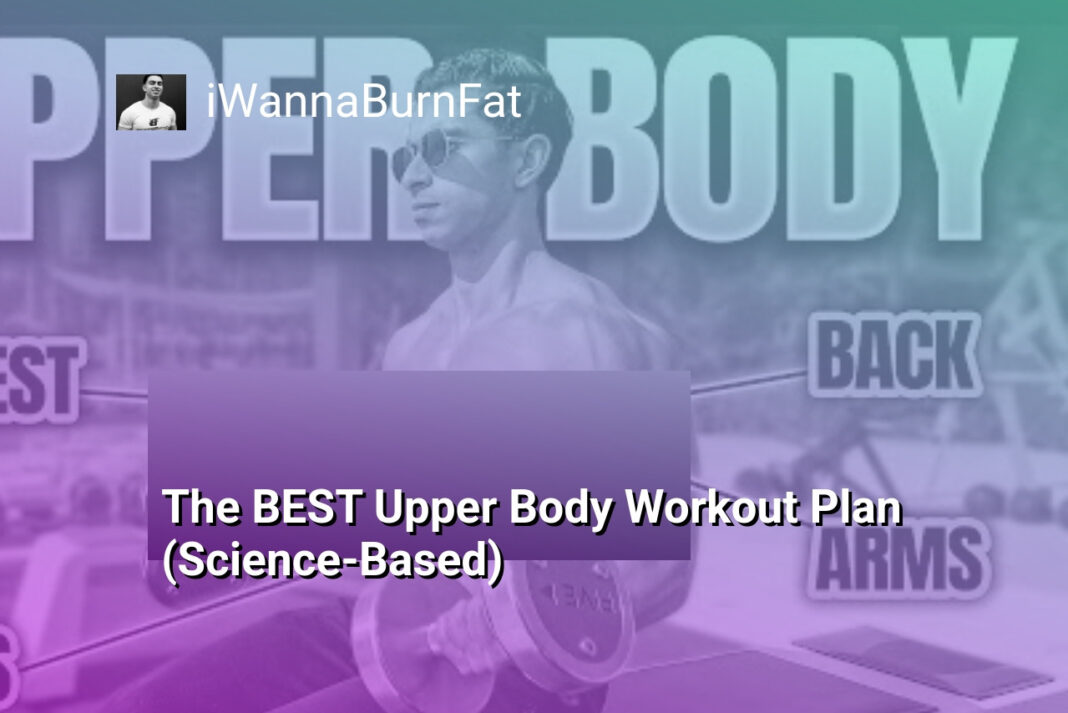The Bottom Line:
- I discovered a comprehensive upper body workout targeting multiple muscle groups through strategic exercise selection and movement patterns.
- The routine incorporates seven key exercises designed to engage different muscle regions with precise set and rep ranges for maximum muscle development.
- By implementing variations like grip adjustments and alternative movements, I can customize the workout to challenge specific muscle groups and prevent plateaus.
- Time efficiency is crucial, with the entire session lasting approximately one hour and offering options to reduce duration through strategic supersets.
- The workout emphasizes research-backed techniques and personalized coaching, ensuring an adaptive and scientifically informed approach to strength training.
Comprehensive Upper Body Exercise Selection
Strategic Muscle Group Targeting
Selecting the right exercises is crucial for comprehensive upper body development. Each movement should strategically engage multiple muscle groups while providing sufficient stimulus for hypertrophy and strength gains. By incorporating exercises that challenge different movement patterns and muscle fiber types, you create a robust workout that promotes balanced muscular growth and prevents potential imbalances.
Exercise Selection Criteria
When choosing upper body exercises, consider factors like muscle recruitment, range of motion, and potential for progressive overload. Compound movements like pull-ups and barbell rows recruit multiple muscle groups simultaneously, maximizing training efficiency. Isolation exercises such as bicep curls and side raises help target specific muscle groups, allowing for detailed muscle definition and addressing potential weaknesses in smaller muscle regions.
Biomechanical Optimization
Understanding the biomechanical principles behind each exercise ensures proper muscle engagement and reduces injury risk. Exercises like dumbbell bench press and shoulder press require precise form to maximize muscle activation while minimizing joint stress. Variations in grip width, angle, and equipment can significantly alter muscle recruitment patterns, enabling more nuanced and targeted muscle development. By strategically rotating between different exercise variations, you can continuously challenge your muscles and prevent adaptation plateaus, ensuring consistent progress in strength and muscle growth.
Strategic Movement Pattern Targeting
Precision Muscle Group Targeting
Effective upper body training requires a strategic approach that goes beyond random exercise selection. By systematically targeting specific movement patterns, you create a comprehensive muscle development strategy that maximizes muscle growth and prevents potential imbalances. Each exercise in this workout is meticulously chosen to engage multiple muscle groups simultaneously while ensuring targeted stimulation.
Biomechanical Movement Optimization
Understanding muscle recruitment patterns is crucial for designing an effective workout. Horizontal and vertical push/pull movements create a synergistic approach that challenges muscles from different angles. For instance, pull-ups engage the latissimus dorsi, biceps, and rear deltoids through a vertical pulling motion, while barbell rows provide a horizontal pulling stimulus that recruits similar muscle groups with slightly different mechanical advantages.
Progressive Muscle Engagement Techniques
The workout’s exercise sequence is intentionally structured to progressively fatigue muscle groups while maintaining optimal performance. By alternating between pushing and pulling movements, you allow specific muscle groups brief recovery periods while continuing to train other muscle regions. This approach prevents complete muscular exhaustion and maintains overall workout intensity. Variations in grip width, angle of movement, and equipment selection further enhance muscle stimulation, ensuring comprehensive development across different muscle fiber types and promoting continuous adaptation and growth.
Detailed Exercise Technique Breakdown
Precision in Movement Execution
Mastering each exercise’s technique is crucial for maximizing muscle engagement and preventing potential injuries. For pull-ups, maintain a strict form by fully extending arms at the bottom and pulling chin above the bar at the top. Engage your core throughout the movement to minimize unnecessary swinging and optimize lat activation. Your grip width should vary depending on whether you want to emphasize back width or thickness.
Biomechanical Muscle Targeting Strategies
During dumbbell bench press, focus on maintaining a slight arch in your lower back while keeping shoulder blades retracted. This positioning ensures optimal chest muscle recruitment and reduces shoulder joint stress. For barbell rows, maintain a neutral spine and pull the weight towards your lower chest, squeezing shoulder blades together at the peak of the movement. Elbow positioning is critical – keep them at a 45-degree angle relative to your torso to maximize back muscle engagement.
Advanced Technique Refinement
Shoulder press requires careful attention to shoulder mobility and joint alignment. Initiate the movement by slightly tilting your head back, allowing a natural bar path that minimizes shoulder impingement. For bicep curls, concentrate on minimizing momentum by keeping upper arms stationary and rotating only at the elbow joint. Tricep skull crushers demand precise elbow positioning – keep them locked and pointed towards the ceiling to maintain consistent tension on the muscle group. Side lateral raises should be performed with a slight bend in the elbow and controlled, deliberate movements to maximize side deltoid activation without recruiting trapezius muscles unnecessarily.
Efficient Workout Time Management
Strategic Rest and Recovery Intervals
Optimizing rest periods between sets is crucial for maintaining workout intensity and muscle growth. Typically, different muscle groups require varied recovery times. For compound movements like barbell rows and pull-ups, aim for 90-120 seconds of rest to allow complete muscle recovery. Isolation exercises such as bicep curls and side raises can have shorter rest intervals of 45-60 seconds, keeping metabolic stress high and maintaining muscle engagement.
Maximizing Workout Efficiency
Implementing advanced training techniques can significantly reduce total workout duration while preserving muscle-building potential. Supersets, where you alternate between two exercises targeting different muscle groups with minimal rest, can cut workout time by 20-30%. For instance, pairing dumbbell bench press with barbell rows allows one muscle group to recover while another is actively working. This approach not only saves time but also increases overall workout density and metabolic demand.
Progressive Overload and Time Management
Tracking workout progression is essential for continuous muscle growth and efficient time utilization. Use a digital or physical workout log to record sets, reps, and weights. This practice helps you systematically increase resistance and volume over weeks, ensuring consistent muscle adaptation. By planning your workout in advance and having a structured approach, you can minimize idle time between exercises and maintain a focused, high-intensity training session that maximizes muscle development within a compact timeframe.
Performance Optimization and Muscle Growth Strategies
Progressive Overload and Muscle Hypertrophy Techniques
Achieving maximum muscle growth requires strategic implementation of progressive overload principles. By systematically increasing weight, repetitions, or training volume, athletes can stimulate continuous muscle adaptation. Key strategies include incrementally adding 2-5 pounds to each exercise every 1-2 weeks, ensuring muscles are consistently challenged beyond their current capacity. This method prevents plateaus and promotes sustained muscle development by creating micro-tears that trigger protein synthesis and muscle repair mechanisms.
Recovery and Metabolic Optimization
Effective muscle growth extends beyond workout intensity and requires comprehensive recovery protocols. Protein intake plays a critical role, with recommended consumption of 1.6-2.2 grams per kilogram of body weight daily. Strategic nutrient timing, particularly consuming protein and complex carbohydrates within 30-45 minutes post-workout, accelerates muscle protein synthesis and glycogen replenishment. Additionally, prioritizing 7-9 hours of quality sleep supports hormonal balance, with growth hormone and testosterone release peaking during deep sleep cycles, facilitating muscle repair and growth.
Advanced Training Manipulation Strategies
Implementing advanced training techniques can significantly enhance muscle growth potential. Techniques like drop sets, where weights are reduced after reaching muscle failure to extend set duration, and tempo manipulation, controlling eccentric and concentric movement speeds, can increase muscle tension and metabolic stress. Incorporating periodization models that alternate between hypertrophy-focused training blocks with varying intensity and volume prevents adaptation stagnation. Utilizing techniques such as rest-pause sets and controlled partial repetitions can further stimulate muscle growth by targeting different muscle fiber types and maintaining consistent metabolic stress.





